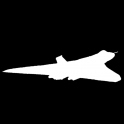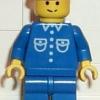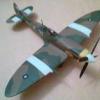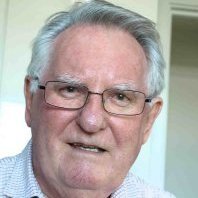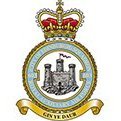

Stonar
Members-
Posts
838 -
Joined
-
Last visited
Contact Methods
-
Website URL
http://
-
ICQ
0
Profile Information
-
Gender
Male
-
Location
Birmingham
Recent Profile Visitors
2,505 profile views
Stonar's Achievements

Obsessed Member (4/9)
225
Reputation
-

Luftwaffe Staffeln Badges - identifications needed please
Stonar replied to John Tapsell's topic in Aircraft WWII
Summer '42, Stara-Bychow would be my guess (it is a guess). Other images taken there show it got warm enough. -

Luftwaffe Staffeln Badges - identifications needed please
Stonar replied to John Tapsell's topic in Aircraft WWII
10./KG 1 -

Bomber Command Raid on Stettin around 20/2/43 (date edit)
Stonar replied to iainpeden's topic in Aircraft WWII
Theo Boiten's 'Nachtjagd Combat Archive' suggests that this Halifax was a victim of Oblt. Helmut Schulte of the Stab II./NJG5. He claimed a four motor bomber south of Brandenburg at 03.40. It was one of 78 aircraft lost, 9.5% of the attacking force, a bad night for Bomber Command! -
But that begs the question, at what stage were they painted? This is before the rest of the U/C fairing is fitted. Whereas on the Slovakian D-5s. We'll probably never know why the Slovakian examples look like that. I do know that my default would be the camouflage colour in the absence of good evidence to the contrary.
-
On page 223 of Eddie Creek's Ju 87 book, there is an image of a Ju 87 D in what looks like final assembly at the Templehof factory. In it your gaiter (German 'federspant', literally spring frame) is fitted without the rest of the fairing. It is clearly a dark colour which looks a lot like the rest of the fairing colour once fitted. That would make sense. On page 152 of the same book there are several images of some D-5s in Slovakian service. In these, for some reason, the same part is in a much lighter colour and what looks very much like a canvass material. I have no idea why the two would be different.
-
The wooden spherical casing was removed for the series of tests at Reculver during the last ten days of April 1943. The decision to abandon the casing seems to have been taken on or about 25 April. Given that this caseless mine was then the accepted standard, I am struggling to understand why the weapons delivered to Scampton a couple of weeks later, for the operation on 16/17 May, would have been delivered with the casing. Final tests on 7 May were caseless and subsequent practice drops by 617 Squadron crews on 11, 12 and 13 May were all caseless. Is their evidence that the casings were indeed removed at Scampton?
-
'The Wages Of Destruction - The Making and Breaking of the Nazi Economy' by Adam Tooze. Published by Allen Lane 2006, Penguin Books 2007. ISBN 978-0-141-00348-1 Not an easy read, but an important one. I would recommend it.
-

Presentation Spitfire Mk.Vb W3765 'Rollers Spitfire'
Stonar replied to twp1's topic in Aircraft WWII
The extensive history of this aircraft in Boot and Sturtivant's 'Gifts of War' states: "Category Ac damage was incurred on 27 September [1943] when Flg Off M. F. Armytage with a broken tail wheel due to the poor condition of the Sommerfield tracking. W3765 went to Scottish Aviation at Prestwick for repairs and installation of a Merlin 45 M engine..." Of course that doesn't tell us what it replaced. This aircraft seems to have been quite accident prone, undergoing repeated visits for repairs to Heston, once for Category B damage after Plt Off M. Szelestowiski flew into a tree and crashed at Chorleywood. It also passed through various M.U.s. Who knows what was done during these visits? The final entry states that it was struck off charge after an accident on 26 June 1954 when the undercarriage collapsed. The aircraft was with No. 577 (AAC) Squadron at Castle Bromwich at this time. -
My father was a FAA pilot and reckoned that he had broken the world record for the 100 yard dash whilst wearing a US seat style parachute and harness. This was escaping a fire, NAS Kingsville, early fifties. Of course he didn't, but apparently you can waddle quite quickly when your life depends on it
-

New Airfix 1/24 Spitfire Mk.IXc engine cowling fit question?
Stonar replied to One 48's topic in Aircraft WWII
You are not alone. I'm very close to having to make that decision for mine. The fact that the instructions suggest a different construction if you do want to fit all the panels is not encouraging for those who want a complete engine and the option to zip it up. I already have a bag of 'optional bits' that I can position if I want to open up the gun covers! -
Mod 189. Introduce plastic pilot's seat, 14 February 1940.
-
I can think of a couple of pictures (B+W) which show very dark coloured Spitfires on Malta, but the blue of the roundel is distinct. That would imply that the colour(s) used were not roundel blue, but I'm not sure we will ever know for sure what was used. There is also a practical consideration regarding the quantity of such a colour likely to be available. I've seen Dark Mediterranean Blue, Royal Blue, Night and even some local concoction suggested for the 'dark' Spitfires on Malta. I made a model of BP989 some years ago and went with my version of Royal Blue, principally based on the visibility of the black serial number in photos, so definitely not a proven or definitive choice
-
A google of '451 Squadron Spitfires' turned up a picture of BQ-X captioned 'El Daba c.1943' which I think does show the leading edge stripes. I would attach the image, but its not easy on this forum. Cheers Steve

